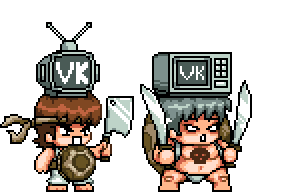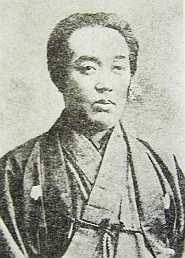
Saturday, May 31, 2008
LYRICS "OKIKU"

THESE ARE THE LYRICS IN THE BLACK METAL THROW-DOWN ON THIS TRACK:
"Bancho sara-yashiki"
Okiku wa Aoyama Tessan no ie ni, jochuu to shite hataraite imashita. Aruhi kahou de aru juu-mai no kouka na touki no sara o katazuketeiru toki, Okiku wa ukkari sono sara no ichi-mai o watte shimaimashita. Okotta Aoyama wa Okiku o koroshi, sono shitai o furuido ni nagesutemashita. Sonogo maiban Okiku no yuurei ga ido kara araware, sara o
yukkuri kyuu-mai made kazoeruto, totsuzen hitsuuna susurinaki o hajimeru no deshita. Sore wa nandomo nandomo kurikaesare, Aoyama o kurushimemashita. Tsuini Aoyama wa ki ga kurui, Okiku no fukushuu wa hatasareta no deshita.
"The Story of Okiku" is a famous yuurei story.
Okiku works as a maid at the home of the samurai Tessan Aoyama. One day while cleaning a collection of ten precious ceramic plates, which is a family treasure, she accidentally breaks one of them. The outraged Aoyama kills her and throws the corpse into an old well. Every night afterwards, Okiku's ghost rises from the well, slowly counts out nine plates and then breaks into heartrending sobs, over and over and over again, tormenting the samurai. Finally, vengeance is wrought when Aoyama goes insane.
HOMEWERKZ
女中//jochuu
(maid)
ある日//aruhi
(one day)
家宝//kahou
(family treasure)
かたづける//katazukeru
(to clean)
高価な//koukana
(precious)
陶器の皿//touki no sara
(ceramic plates)
うっかり//ukkari
(accidentally)
割る//waru
(to break)
怒ったokotta
(outraged)
殺す//korosu
(to kill)
投げる//nageru
(to throw)
死体//shitai
(corpse)
古井戸//furuido
(old well)
数える//kazoeru
(to count)
ゆっくり//yukkuri
(slowly)
悲痛な//hitsuuna
(heartrending)
苦しめる//kurushimeru
(to torment)
復讐//fukushuu
(vengeance)
気が狂う//ki ga kuruu
(insane)
Friday, May 23, 2008
YOSHITOSHI TSUKIOKA [月岡 芳年]
Tsukioka Yoshitoshi (1839 - June 9, 1892) (Japanese: 月岡 芳年; also named Taiso Yoshitoshi 大蘇 芳年) was a Japanese artist.
He is widely recognized as the last great master of Ukiyo-e, a type of Japanese woodblock printing. He is additionally regarded as one of the form's greatest innovators. His career spanned two eras - the last years of the old feudal Japan, and the first years of the new modern Japan. Like many Japanese, while interested in the new things from the rest of the world, over time he became increasingly concerned with the loss of many outstanding things from the traditional Japan, among them the traditional woodblock print.
By the end of his career, Yoshitoshi was in an almost single-handed struggle against time and technology. As he worked on in the old manner, Japan was adopting the mass reproduction methods of the West, like photography and lithography. Nonetheless, in a Japan that was turning away from its own past, he almost single-handedly managed to push the traditional Japanese woodblock print to a new level, before it effectively died with him.
His life is perhaps best summed up by John Stevenson:
- Yoshitoshi's courage, vision and force of character gave ukiyo-e another generation of life, and illuminated it with one last burst of glory.
- -- Yoshitoshi's One Hundred Aspects of the Moon, 1992
His reputation has only continued to grow, both in the West, and among younger Japanese, and he is now almost universally recognized as the greatest Japanese artist of his era.
Banchō Sarayashiki [番町皿屋敷] - OKIKU
Folk version
Okiku was the beautiful servant of the samurai, Aoyama Tessan. She refused his amorous advances so he tricked her into believing that she had carelessly lost one of the family's ten precious delft plates. She recounted the nine plates many times but when she could not find the tenth, Aoyama offered to overlook the matter if she became his lover. Again she refused and he threw her down a well to her death.
She became a vengeful spirit who tormented her murderer by counting to nine and then making a terrible shriek to represent the missing tenth plate. In some versions of the story, this torment continued until an exorcist or neighbor shouted "ten" in a loud voice at the end of her count. Her ghost, apparently easily satisfied, haunted the samurai no more.
Ningyō Jōruri version
Hosokawa Katsumoto, the lord of Himeji Castle, has fallen seriously ill. Katsumoto's heir, Tomonosuke, plans to give a set of 10 precious plates to the Shogun to ensure his succession. However, chief retainer Asayama Tetsuzan plots to take over. Tomonosuke's retainer, Funase Sampei Taketsune is engaged to marry a lady in waiting, Okiku. Tetsuzan plans to force Okiku to help him murder Tomonosuke.
Tetsuzan, through the help of a spy, steals one of the 10 plates, and plans to accuse Okiku of stealing the plate if she does not assist in the crime. Tetsuzan summons Okiku to bring the box containing the plates to his chamber. There, he attempts to seduce Okiku, although she refuses due to her love for Takatsune. Rejected, he then has Okiku count the plates, and finds only nine. He blames her for the theft, and swears to lie for her if she will be his mistress. Okiku again refuses, and Tetsuzan has her beaten with a wooden sword.
Tetsuzan then has her suspended over a well and, erotically enjoying her torture, has her lowered into the well several times, beating her himself when she is raised. He demands that she become his lover, and assist in the murder of Tomonosuke. She refuses again, and Tetsuzan slashes her with his sword, sending her body into the well.
While wiping clean his sword, the sound of a voice counting plates comes from the well. Tetsuzan realizes that it is the ghost of Okiku, but is entirely unmoved. The play ends with the ghost of Okiku rising from the well, and Tetsuzan staring at her contemptuously.
Okamoto Kido version
In 1655, in Edo, a vassal of the Shogun Aoyama Harima has fallen in love with a young servant girl Okiku. Aoyama has promised to marry her, but has recently received an auspicious marriage proposal from an Aunt. Aoyama promises Okiku that he will honor their love, and refuse the proposal.
Okiku doubts, and tests him by breaking one of the 10 heirloom plates that are the treasure of the Aoyama household. The traditional punishment for breaking one of the plates is death, which is demanded by Aoyama's family.
At first, Aoyama is convinced that Okiku broke the plate by accident, and pardons her, but when Okiku reveals that she broke the plate as a love-test, Aoyama is enraged and kills her. He then throws her body down a well.
From then after, Okiku’s ghost is seen to enter the house and count the plates, one through nine. Encountering her in the garden, Aoyama sees that her ghostly face is not one of vengeance, but beautiful and calm. Taking strength from this, he commits seppuku and joins her in death.
Romantic Influence
Okomoto's version is notable for being a much more romantic adaptation of the story, similar to the Kabuki version of Botan Doro. This was an influence of the Meiji restoration, which brought Western plays to Japan for the first time. Western plays were much more noticeable for romantic elements, and this was adapted into a style of theater known as Shin Kabuki. Shin Kabuki was ultimately an unsuccessful merger of East and West, although Okomoto's Bancho Sarayashiki remains as one of the few classics.
Okiku and Ukiyo-e
Like many Kabuki plays, Okiku was a popular subject matter for ukiyo-e artists. In 1830, Katsushika Hokusai included her as one of the kaidan in his One Hundred Tales (Hyaku monogatari) series. Ekin, a somewhat notorious artist who had troubles with the law, painted a Byobu-e [2] of Okiku being accused by Tetsuzan Aoyama and his brother Chuta.
Most notably, she appeared as one of the New Forms of Thirty-Six Ghosts by Tsukioka Yoshitoshi. His portrayal of Okiku is unusually sympathetic, particularly as ghosts were viewed as fearsome apparitions by nineteenth-century Japanese, relflecting a general trend in his later work.
Influences on Japanese culture
In 1795, when Japan suffered an infestation of a type of worm found in old wells that became known as the "Okiku bug" (Okiku mushi). This worm, covered with thin threads making it look as though it had been bound, was widely believed to be a reincarnation of Okiku.
As the Ningyo Joruri version is set in Himeji Castle, a popular tourist attraction at the castle is Okiku-Ido, or Okiku's Well. Traditionally, this is where the hapless maid's body was thrown after being killed by Tetsuzan. Although the castle is closed at night, it is said that her ghost still rises nightly from the well, and counts to nine before shrieking and returning.
The NES game Monster Party features a boss named "The haunted well"; a well who attacks by throwing plates at the player, an obvious reference to the tale. But since the game was only released on the USA, many players did not understand the concept.[1]



